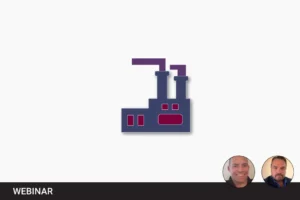One thing cannot be assumed as a process safety leader and that is that senior company executives within an organisation understand the complexities of process safety or know the answer to the question “what can actually go wrong”.
To combat this, many organisations have begun implementing specific training exercises whereby senior company executives must go out into the operational environment to try and answer this vital question. In multiple cases, their investigations have revealed serious flaws which if left unaddressed, could have resulted in a major incident.
There is an assumption across a variety of industries that senior company executives have scrutinised the risk assessments as closely as those who completed them, but this is rarely the case.
Even when processes have undergone rigorous safety risk assessments, documented concerns may still remain with the operators. Senior management and leadership teams are often unaware of these added operational and process management concerns and their potential hazards.
In conjunction with process leadership, business leadership teams should aim to set out effective good process safety practices across the entire organisation. This effective good practice should aim to adopt a culture of continuous improvement. This culture must then become a core value for that business.
Delegation culture: pre-pandemic initiatives
In a delegation culture, business leaders often assume that duties have been implemented correctly, but they do not necessarily get so actively involved that they know for certain.
In the UK, before the COVID pandemic, the Health and Safety Executive began an initiative to challenge delegation culture by inspecting the behaviours of senior business leadership teams.
They began their interventions at the CEO level by asking what they were doing as individuals to progress process safety within their organisation and what was being done to improve their business from a process safety perspective.
During these inspections by the HSE, the CEOs were not allowed to have the group health and safety manager in the meeting with them as they were expected to be personally aware of process safety risk management within their business.
Since the pandemic, the initiative has stalled slightly but it does display the start of a push towards more stringent process safety leadership principles. As time progresses, this initiative will spread globally
Corporate guidelines and cornerstones for governance
Although there is an abundance of corporate literature available for senior company executives, the most valuable information on building an effective process safety culture can be found in the PSLG (UK) and OECD (Europe) published guidelines.
They are incredibly useful as singular process safety documents, but they effectively emphasize the same thing; apply effective management and good business guidelines to process safety and treat it as a core value of a business.
The cornerstone for governance should supply a solid understanding of what it is that our processes do and what are the risks involved. Everyone from the boardroom to senior leaders, operators and maintainers must possess this understanding.
Understanding safety culture
Good process safety practice hinges on organisational culture. The UK HSE defines process safety culture as:
“… the product of the individual and group values, attitudes, competencies and patterns of behaviour that determine the commitment to, and the style and proficiency of, an organisation’s health and safety programmes”
However, a more succinct definition could be “effective process safety culture is how the organisation behaves when no one is watching.”
Everyone in an organisation must follow agreed procedures and understand why the procedures are in place. Establishing these behaviours is what organisational process safety culture is.
If an organization likes to use actionable inputs because they generate prompts, then it can be tough to improve individual behaviours and attitudes. Hence, it becomes difficult to create robust and permanent company culture.
As good process safety culture is based on people’s attitudes and behaviours, it becomes intrinsically difficult to measure. Culture takes years to build, and it can only be effective if it is well implemented and if the created procedures are routinely followed.
Throughout available process safety guidance, there is an ever-increasing emphasis on culture and the fact that culture is built around the behaviours of individuals. This directly links to individual competence.
Organisational vs Individual culture: Challenging attitudes and behaviours
Competence is more than just skills, knowledge and experience, it includes attitudes and behaviours. All essential knowledge may be known, and tasks may have been completed correctly multiple times before, but danger arises if even a small corner is cut on a particular day.
Process safety comes down to the individual actions of people working in teams. And, somebody somewhere in the organisation will know, either consciously or subconsciously, what risks and hazards are present in a particular process.
Presenting a simple hypothetical situation can aid in better understanding how an organisation can accomplish this.
If a room full of employees are asked about the current management of change system, they will no doubt be able to say what parts of the management of change system work well and what parts do not. The same can be said for a permit to work system. What must come out of this exercise is enough intelligence to fix the problem.
This is a differentiator. A business must be able to trust that the individuals are competent enough to ensure that the processes are safe. Individuals must trust that the organisation is competent enough to intelligently use their feedback. No one can work without the other. Perfect harmony is needed between the organisation and the individual.
Using individual intelligence requires an organisation to have competence throughout its personnel across all levels. It also relies on the business to engage, listen and trust the intelligence gathered.
So, senior leadership or management must be tasked with going out and having meaningful discussions with people doing routine tasks. These conversations will lead to a better overall understanding of the hazards, risks and awareness of the current safety measures that are in place. Again, this aids in ensuring that the entire organisation is aware of what can go wrong.
Introducing a Just culture
Attitudes and behaviours should be coupled with a business wide just culture. This is a culture whereby a standard is set, and everybody works to that standard. If people stray from that standard the repercussions are dealt with in the same way.
If an operator is dismissed for doing something and a member of the safety leadership team did the same thing, they would also be dismissed. This is not a blame culture; it is the creation of a just culture.
Finding the gaps
Organisations must be in continuous improvement mode. If there is not an emphasis on finding gaps in systems and in ways of working, there will be no room for improvement. These operational risks will remain and eventually, they will come back to bite.
Organisations set themselves up just to satisfy the safety auditor. If we aim to show the auditor what we want, then their feedback will only concern what we have shown. There must be a move towards viewing process safety from the point of view of an entire system.
There is a philosophy, which is specifically aimed at how high-reliability and innately risky organizations should work.
Only through this initiative-taking approach can we understand this core question and as a result, can the correct safety measures or safeguards be added to deal with these potentially high-hazard incidents.
With this philosophical orientation, and by using every opportunity to gain experience and improve, there should be fewer and fewer unknown unknowns.
Furthermore, it is far easier to predict problems that could happen on-site and to ensure that measures can be put in place to deal with them. No one should wait for something to happen before fixing it.
Process Safety Management: Setting goals & targets
When goals have been set and conducted it is obvious that work has been completed. Goals are usually followed by workable and well-implemented management systems to create outputs.
These outputs may work within varying parameters, such as product quality, business profitability and health and safety.
There also have to be good short and long-term targets and goals.
These targets and goals must be agreed upon by everybody and must be achievable.
For business leaders, revenue targets and goals do not suddenly go from one million pounds up to fifteen million pounds in profit in one year, because people will not believe that that is achievable.
Process Safety Leadership: Challenging negative coaching & mentoring
This is a difficult aspect for businesses to address because everybody across the business needs an element of coaching and mentoring.
Those that provide it must have specific training in supplying coaching and mentoring, which almost becomes an infinite loop. However, the main aim is to supply an understanding of what people’s behaviours are, whether they are aware of what could go wrong and how to improve.
Coaching and mentoring across a variety of industries are increasing at a faster rate than ever before. It is, however, starting to gather negative traction in the process industries as companies have begun to set goals found via safety observations.
Safety observations are based on watching how jobs are completed and ensuring that they are/have been achieved properly.
This entire approach tends to breed negativity, as goals are only set around discovering that something is being done incorrectly. Then that particular incident is dealt with.
Instead, process leaders must as where the positive action is for those that have completed tasks correctly. Far more intelligence can be gathered, and then fed back to the rest of a business if there is an awareness of how tasks have been done correctly.
Using a range of systems such as performance monitoring, safety observations, and other process safety tools, goals in the form of improvements and outcomes can be generated and then achieved through positive coaching and mentoring.
Measuring performance
There should also be a watchful eye when measuring process safety performance. When thinking about how much an average company spends on incidents and near-miss investigation audits per year, it is a staggering amount of money.
Yet if this process safety performance information is not integrated into an effective safety strategy, it is a waste of time, effort and money. Relevant information must be used to make systems better. This is where leadership and organisational culture ensure that process safety management systems persevere.
A culture centres around everyone working together because process safety is not something that only process safety managers oversee. Just like occupational safety, everybody has a responsibility for process safety. Everybody is accountable and everybody should know what can go wrong, this aids in the adoption of a culture of continuous improvement.
Senior leadership and the long-view lens
Senior leaders should set out a roadmap and find where improvements must be made to achieve targets and goals. This can only be undertaken via a holistic view.
Although senior managers will not sit in on quantified risk assessments (QRA), Hazard and Operability Studies (HAZOP) or permits to work, they must be committed to the process of doing things properly via thorough safety planning, implementation and reporting.
Ideally, senior leaders also need to adhere to value maximisation, not profit maximisation. Value maximisation is linked to the overall sustainability of the business, rather than short-term needs.
If organisational culture is set and supported correctly and such systems can influence performance, then the business becomes more efficient. But this culture must be viewed via a long view lens because process safety is not something that can be fixed in an afternoon.
Process safety management teams must be tactically focused on wider goals for the year, while the senior leadership should be focused on the goals and aims for years going forward.
Conclusion
Understanding what processes do and the dangers they pose is the cornerstone of good governance and everyone should be aware of this. This includes senior leaders, operators, and maintainers.
A successful process safety culture can be created by asking what can go wrong. Senior management and process safety leadership teams must be given the responsibility to interact meaningfully with those carrying out daily responsibilities while ensuring that they tactically focus on future goals. These discussions will result in a greater general comprehension of the dangers and risks while enforcing knowledge of already existing safety measures.
Ultimately, everyone in the organisation must adopt a culture of continuous improvement
Learn more about process safety management in our resource centre.



